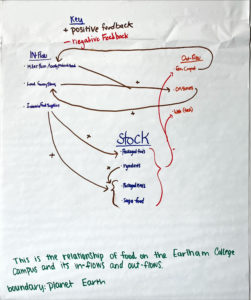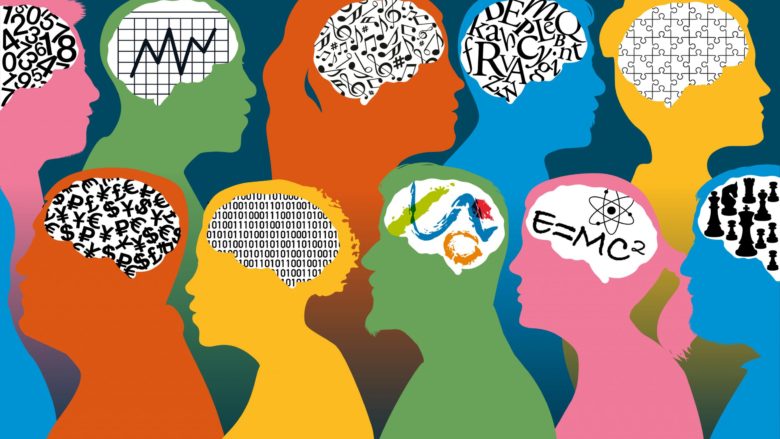“Embracing neurodiversity to create better education for all”

Between 15-20% of the US population is neurodiverse, and many go their entire lives without being diagnosed. Despite the increasing awareness and diagnoses, specific spaces, such as academia, have been known to exclude and marginalize those who fall out of the cookie-cutter learning mode. Those who fall out of this narrow and outdated setup are often made to feel inferior as if they are the problem, rather than the education system as a whole. School can be the place where neurodiverse students face the most discrimination and experience gatekeeping when it comes to pursuing higher education. Wanting to explore how Earlham is tackling these issues, we set out to interview students and staff on their experiences, any stigma or discrimination faced, and proposed solutions. This article mostly refers to conditions like ADHD, autism, depression, and anxiety, but we recognize that these accommodations are necessary especially for other, lesser disclosed and more stigmatized conditions like DID or schizophrenia.
In talking to a handful of professors, we learned of the obstacles they faced in their many years in academia. Many shared that navigating the education system with little understanding of these issues was a brutal process. Andy Moore, The Call for Neurodiversity Justice in Higher Education “Embracing neurodiversity to create better education for all” Co-written by Indira Delacorte and Anna Wible “The Power of Neurodiversity” There is much beauty to be found in the unique strengths and perspectives of neurodivergent students. Photo Provided by HR Daily Advisor an earth and environmental science professor, spoke of how he was told he was “being a boy” as a child. A narrative he heard a lot was that if you were not getting things in by their due date or showing up to classes on time, you were simply “not living up to your full potential.” In reality, many professors fail to understand how being neurodiverse impacts life, such as time blindness and hyperfocusing, which can make it harder to prioritize tasks.
Other professors shared how they often felt they had to mask their neurodivergence in academic spaces, fearing how it would be received. One of the most beautiful things I encountered when speaking to Earlham professors was how they aimed to make their space more inclusive than the spaces they had previously experienced. Andy Moore shared how he lets people Zoom into classes, records lectures for students, gets to know students on a personal level, and prioritizes student learning and mental health. Lexie Kuzmishin Nagy, a biochemistry professor, added that she finds it very helpful to incorporate movement into her classroom to ground students. She also adds she makes it a habit to meet with students at the beginning of the semester and talk through their accommodations. Sometimes accommodations will need to be adjusted depending on the class and subject, so she likes to stay flexible to remove barriers in the way of their individual learning needs.
Building universal design into higher education is extremely valuable, too, as proposed by Professor of Biology and Environmental Sustainability Jamie Coon. There should be multiple modalities of learning provided for all students they said. “Ideally, we should be compensated for time spent getting educated. I think a panel at the faculty opening retreat would be an excellent idea. People don’t have the words to talk about it, and they don’t know about the microaggressions.” Speaking on the idea of accommodations for students, they noted,” I personally also use a universal extension policy where regardless of accommodations, the whole class has the ability to ask for extensions. I have found that that is not over-utilized by students…they have access to as many extensions as they want; they just have to ask in advance. I’ve noticed that students only really ask when they need it…I read a book that suggested it, and it’s a part of anti-colonialist and anti-racist teaching. It came from recommendations on how to make a classroom more universally accessible.”
The consensus for the Earlham students interviewed was that they feel supported in specific ways and particular departments. However, much work remains to be done regarding a general understanding of these issues. Student Joe Potter said they has not felt supported outside the Geology and Art department. They have not seen an open dialogue and have been met with inflexible deadlines in specific departments. The Neurodiversity Student Union (NSU) Co-Convener Amanda Vasconcellos said they feel very supported as a neurodivergent student at Earlham and feel very lucky regarding the professors they have had during their time at Earlham. They says she hasn’t had much difficulty with the Office of Disability and Accessibility Services (ODAS). However, finding the right resources and support on campus can sometimes be challenging. “At times, I’ve certainly felt like my neurodivergence has impacted my ability to succeed. Whether it’s dealing with comorbidities that so often affect neurodivergent people, struggling to find or ask for the support I need, or simply walking through life and Earlham in a way that’s fundamentally different from the majority, being neurodivergent is often exhausting. Although I appreciate many of the qualities I have as a result of my neurodivergence, it’s also more difficult and stressful to do the things that others may consider easy or “normal.”
A student who wishes to remain anonymous mentioned they feel that Earlham is ALMOST there, but not quite. When speaking on Earlham professors and their ability to accommodate to their sensitivity to loud noises in the classroom, they say, “I feel that most of them have a good understanding of my problems; however, I feel that some professors may get tired of my tendency to make silly comments or connections in class due to my efforts to mask less…One thing I wish some of my professors would understand better is that I cannot get everything I want to get done all the time, and that I struggle just to be proud of me for accomplishing what I have, even if my teachers feel disappointment that I haven’t accomplished more.”
A common theme voiced was the need for more education that would allow for a greater understanding of these issues. Neurodiversity needs to be integrated into educational practices to support inclusion, to allow for the strengths of neurodivergent students to be integrated into the classroom, and to promote the value of diversity. We must challenge the status quo the education system sets forth. This will benefit all students in the classroom, remove barriers to receiving an education, and allow us to move toward a more empathetic and equitable future.


